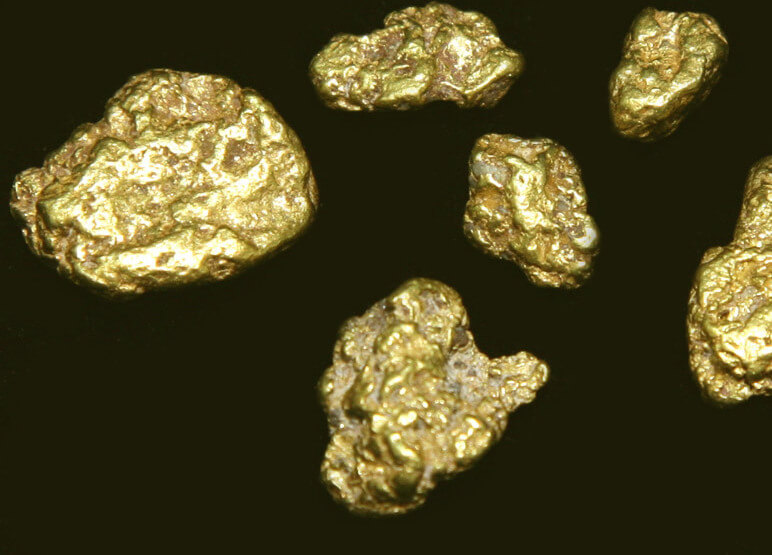This summer, Cartier announced it would be buying part of its gold supply from Goldlake, the Italian company which operates the Eurocantera mine in Honduras. The mine uses an innovative process which uses water instead of cyanide or mercury to extract gold deposits, recycles 100% of its waste, operates a zero discharge water management system, and replants its sites with trees. Cartier has undertaken to buy all the gold Eurocantera produces during the first year of the three-year agreement, and the same amount the following two years. It has also placed an option on up to half any additional production. Cartier firmly believes that mining techniques can and must change, as Pamela Caillens, Director for Corporate Social Responsibility, explains.
Pamela Caillens, Director of Corporate Social Responsibility at Cartier: We became aware relatively early on of the challenges facing the gold and diamond industry in terms of environmental protection, human rights and working conditions. We also realised that even though the Cartier name carries international weight, we had very little influence on our raw material supplies. Cartier accounts for just 0.3% of the gold used in the global jewellery market and 1% of diamonds. For Cartier to remain true to its reputation for excellence, it was our role to make a difference, and not just for our sole benefit either.
Cartier knew that its responsibility went far beyond its immediate sphere of influence. Representatives from across the industry had to sit down at the same table to defend the symbolic and emotional value of gold and diamonds, whether in jewellery or precious watches. There were a dozen of us to begin with, including mining companies. The Responsible Jewellery Council (RJC) now has 130 members. I think we can qualify this as a success.
It was clear to us that the best action we could take was to help and encourage the gold and diamond industries to establish standards, in the form of a code of good practices known as the RJC Core System. This system applies at every level of the chain, from mines to retail by way of companies such as ourselves, refiners, cutters, traders and professional bodies who have the power to inform their members. This is neither an ethical, social nor environmental label but a global approach within a mission which I believe is unique in its kind.
This code of conduct is almost ready for release, meaning we can move on to the second stage which is to certify practices for implementation by companies. The RJC is in the process of selecting the independent bodies that will be tasked with this as from the end of the year. Members of the RJC, including Cartier, will have two years to obtain certification. The ultimate goal is to create a knock-on effect by demonstrating that certification is equated with transparency, professionalism and responsibility. This will prompt other industry players to join us and encourage companies to give priority in their business dealings to RJC companies. For example, a bank could be interested in order to reduce the risk profile of its investments in the branch.
We have already set up our own in-house system. We have audited our sites and asked our suppliers to respect codes of practice. This is something we can build on when preparing for RJC certification. In fact the RJC recommends that companies carry out a self-assessment upstream to facilitate the certification process.
Cartier has a dual strategy. On the one hand, we have an established external standard aimed at improving the average level of good practices within the branch, and we are moving in the direction of requiring RJC certification from our suppliers. On the other hand, we’re looking to identify the innovative, leading-edge companies with whom we want to work, particularly by showing them there is a market for companies with a high social and environmental added value. Put simply, we want them to see that demand exists, if only to cover our own needs. More importantly, we want to stimulate supply by proving to firms that it’s worth investing in order to gain a foothold in this market. Even though the amount of responsibly-produced gold isn’t as yet sufficient to cover total demand, it must be made more widely available.
It is. This is also the first time Cartier has bought its gold directly from the mine. What most appealed to us isn’t so much Goldlake’s action in favour of development or social projects but rather its profitable business model with a high added value for the entire community. It is possible to make money and benefit those around you. The more we see initiatives of this type out in the field, the more points we score.
If we must communicate about this, it’s with the intention of helping the gold industry progress as a whole. Hence the need to differentiate between philanthropy and corporate responsibility. Corporate responsibility means nothing other than how a company chooses to make money or not. We have no intention of transforming this into a marketing tool any more than we intend commercialising a “responsible” line. This isn’t the message we wish to convey. We don’t want our customers to come to Cartier to buy an ethical product. We want them to choose Cartier because our products are desirable and intrinsically responsible. If people put their faith in us, then we must deserve this trust. We’re more concerned with convincing our competitors to join us at the RJC by telling them this is our opportunity to build something that warrants all our efforts. Once we’re on a level playing field, may the best man win!

















